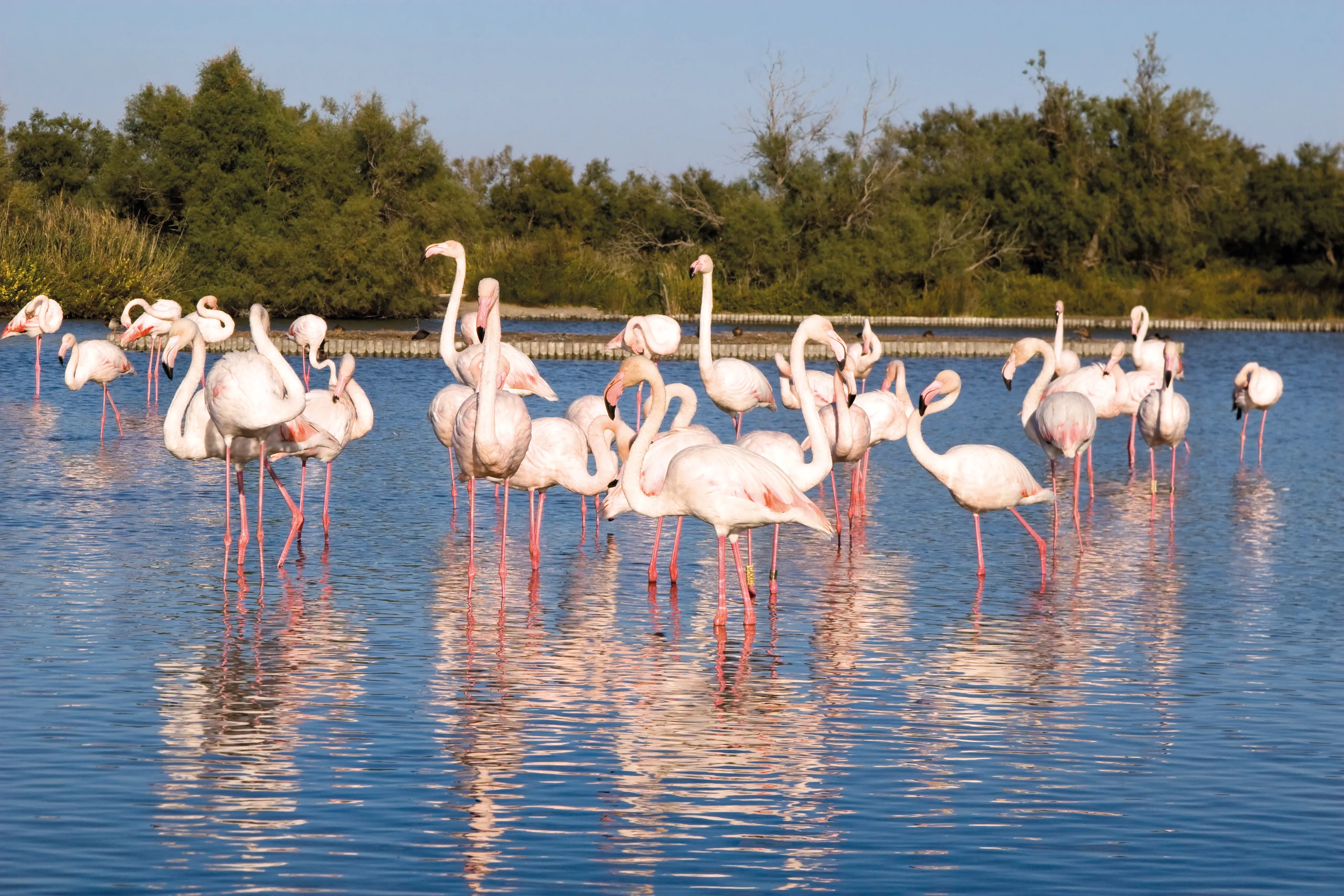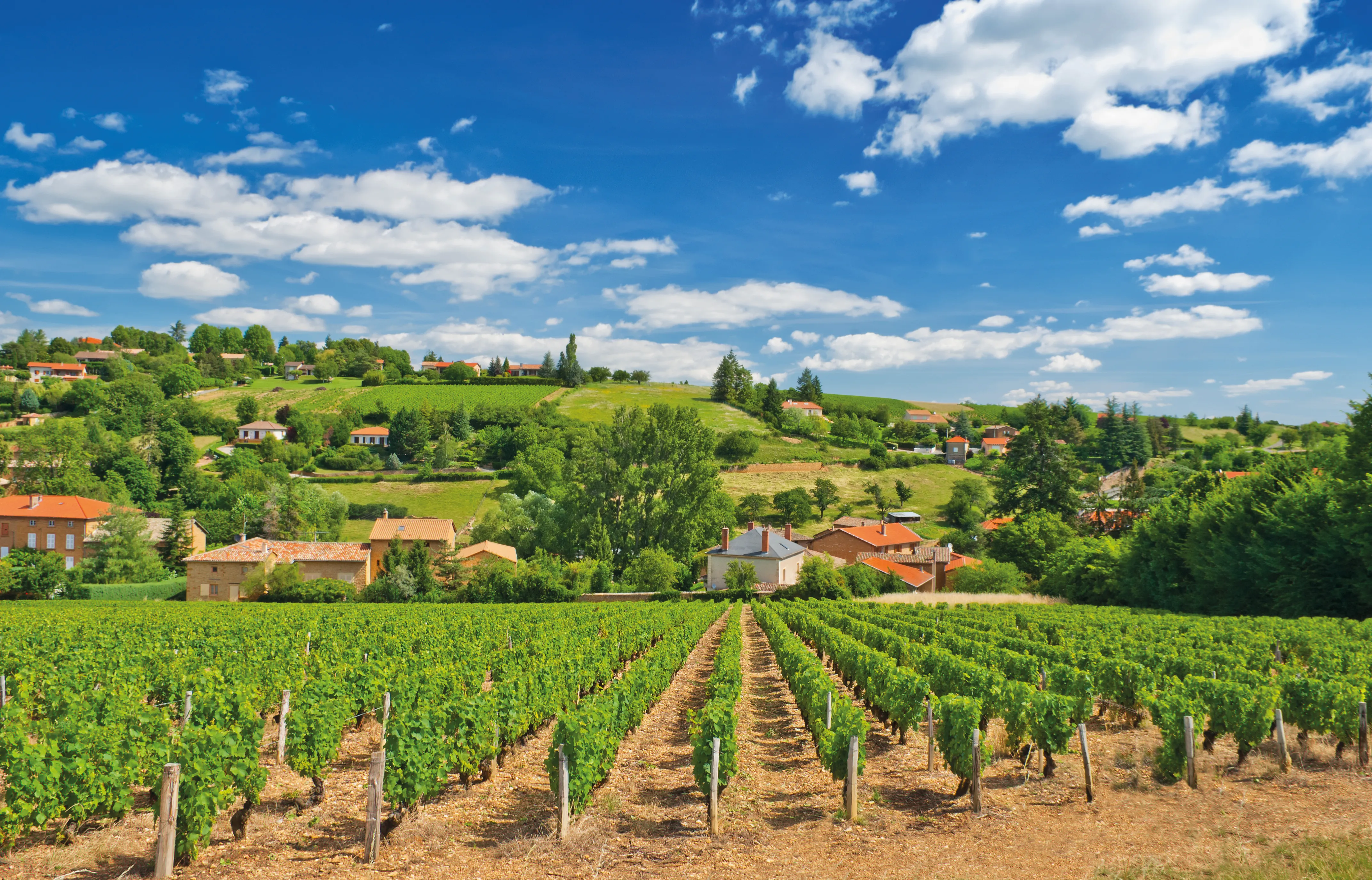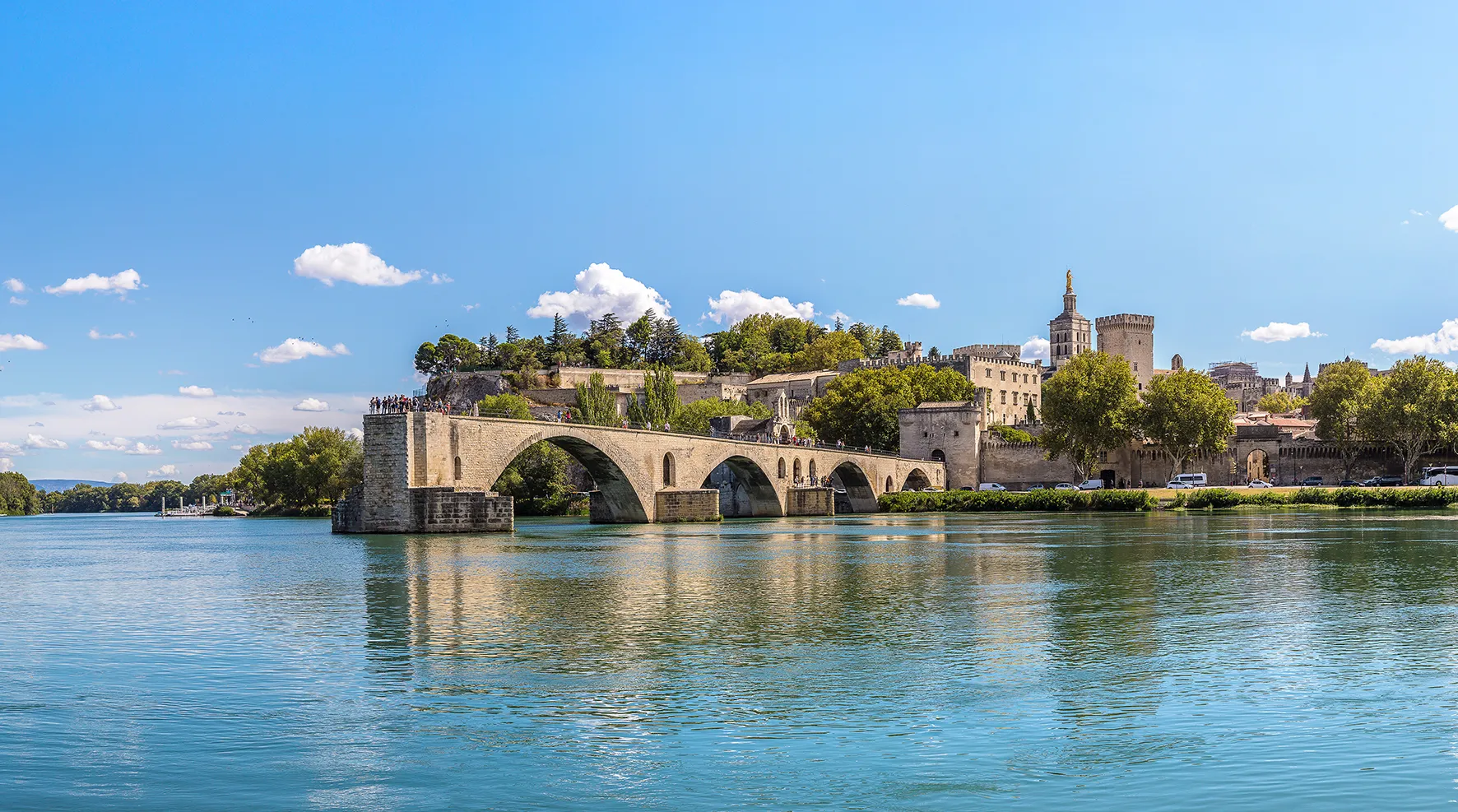- Home
The Rhone, gateway to the Mediterranean
The Rhône and Saône Rivers
The Rhone, Gateway to the Mediterranean
An remarkable river, with twists and turns and challenges to navigate. The Rhône has been a host to monks, popes, kings, and CroisiEurope since 1995. It’s past goes back to the sources of history. This rive will intoxicate your senses with ancestral art and modern adventure.
The Rhone, one of our four great French rivers, is an expatriate. Born in Switzerland in the Gotthard Massif at an altitude of 1750 meters, it keeps the impetuous character of its alpine origins. In 1934, the "Compagnie Générale du Rhône" developed it. Canals, works of Génissiat, Donzère-Mondragon ... Locks of Bollène, Vallabrègues ... It represents a seductive and popular destination of our catalogue. Mediterranean at heart, it leads us to the center of our Gallo-Roman roots. But also, extended to the North by the Saône, it invites us to a real pilgrimage in the most famous vineyards that flourish on its banks through Burgundy and Provence.

A river of Character
From the Gateway to the Mediterranean Sea, the Rhone penetrates inland. The culinary capital of Lyon has been an important crossroads since prehistoric times, with access to the valleys of the Saône, the Rhine and the Seine that open the way to the rest of Europe. History proves, it does not discourage anyone. Cretans, Phoenicians and Greeks risked navigating this lively river. The Rhodians baptised it. The Gauls descended from the North to Marseilles in thirty days. The Romans travelled it in boats pulled by horses. In the nineteenth century, steamships circulated there, well before the Rhine. Historically, its river trade has been extensive. Our cruises crisscross grandiose landscapes and prestigious terroirs: Beaujolais and Bourgogne, between Chalon and Mâcon, Côtes du Rhône near Tain-l'Hermitage.

Caesar opened the way ...
It was a very strange alliance that is at the origin of the history of the Rhone Valley: That of Rome and Christianity. Two civilizations that left their footprints in the cities where we stop. Lyon, capital of Gaul. St-Vallier where Diane de Poitiers used to live. Viviers, charming medieval and episcopal city. Avignon, erected on its rock the citadel of the popes. Beaucaire with its traditional and picturesque market. The walls of Tarascon and the castle of the refined King René. Arles, warm and rich Provencal. Finally Aix, the first Roman camp and Saintes-Maries-de-la-Mer, Sarah's refuge, patroness of the gypsies ... This is where everything begins. Well before our era, the Romans occupied Provence. In 50 BC, Caesar decided to conquer Gaul. His legionaries went up the Rhone, hammering with their footsteps the road of Agrippa, ancestor of our National 7. Winners at Vercingetorix, they left on their way prosperous cities, built baths, aqueducts, temples and arenas. Planted the wheat, the vine and olive trees. It was the prosperous period of the "Pax Romana". Arles and Aix were two great political, cultural and economic capitals. Around the year 300, the conversion of Emperor Constantine to Christianity and the granting of freedom to worship, changed the course of history.

... The Monks followed
The religious communities, quietly present, sent their monks in the footsteps of Caesar. They built churches and abbeys, the "pontiffs" erected four bridges crossing the Rhone. They cleared the land and evangelised in the countryside. The collapse of the Roman Empire and the barbarian invasions, plus the black plague and famine, unleashed a wave of piety. One person in five took holy orders, Saint-Louis embarked for the Crusades at Aigues-Mortes and the Church consolidated its foundations. When the Holy Roman Empire proclaimed the region in 1302, the Rhone became a border. The cities of the two enemy banks were entrenched, fortified on the heights. But the boatmen did not worry much. On the river free of any constraint, the trade was flourishing. For one hundred years, the Rhône had a worldwide reputation. The popes were in Avignon. Jewel of the capital of Christendom, it radiated. Its waters reflected the flamboyant baroque churches bell towers, the castles of cultured princes and bishops, the renowned universities and the glitzy festival lights. We danced under the arches of the bridge of Saint Bénezet. The glass was raised as much as the chalice. Cultivated with religious care by all the monks of the country, vineyards flourished on its banks received by France as a dowry when Louis XI inherited the Provence in the 15th century. Today our cruises and especially those led by the oenology popes, sommeliers and winemakers, honour the famous and prosperous wines of the Rhone Valley: Beaujolais and Bourgogne, Côtes du Rhône and Côtes de Provence, without forgetting the sparkling wine of Cassis.

